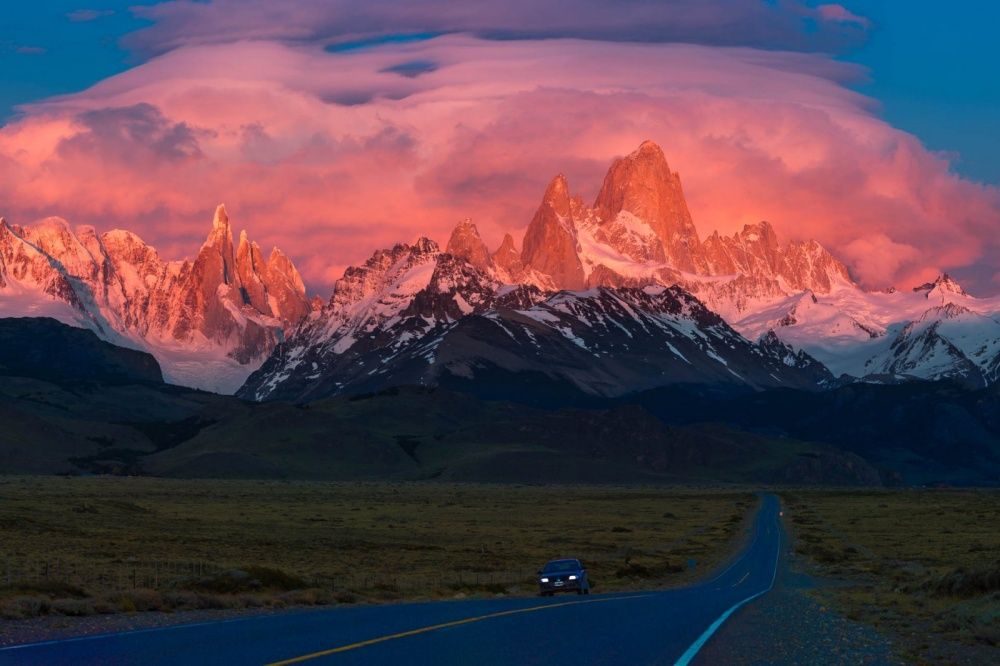Few destinations on Earth stir the imagination quite like Patagonia. Stretching across the southern regions of Argentina and Chile, this vast land of mountains, glaciers, windswept plains, and endless skies feels like the final frontier of the natural world. For travelers seeking adventure, solitude, and breathtaking beauty, Patagonia offers an experience that is both humbling and unforgettable.
A Landscape of Extremes
Patagonia is defined by its contrasts. To the west, in Chile, the Andes rise dramatically, carved by ice into fjords, glaciers, and towering peaks. To the east, in Argentina, lie the endless steppes — wide, open spaces where guanacos and rheas roam beneath skies that seem to stretch forever. This diversity makes Patagonia a dream for photographers, hikers, and anyone enchanted by wild nature.
One of the most iconic sights is Torres del Paine National Park in Chile. Its granite spires, turquoise lakes, and sprawling glaciers make it one of the world’s most celebrated trekking destinations. The famous W Trek and the longer O Circuit allow visitors to experience the park’s extraordinary landscapes up close.
On the Argentine side, Los Glaciares National Park is equally spectacular. The highlight here is the Perito Moreno Glacier, a massive wall of ice that creaks, cracks, and periodically collapses into the waters below in thunderous displays of nature’s power. North of the glacier, the town of El Chaltén is the gateway to hiking routes leading to the dramatic peaks of Fitz Roy and Cerro Torre, beloved by climbers and adventurers from around the globe.
Wildlife Encounters
Patagonia is also a haven for wildlife. Along the Atlantic coast of Argentina, the Valdés Peninsula is a UNESCO World Heritage Site where southern right whales, sea lions, elephant seals, and Magellanic penguins can be observed. In certain months, even orcas can be seen hunting in the shallow waters.
Inland, guanacos — relatives of llamas — graze on the steppes, while condors soar above the mountains. Lucky visitors might even spot the elusive puma in Torres del Paine. Birdwatchers will find Patagonia a paradise, with species ranging from flamingos to woodpeckers inhabiting its varied ecosystems.
The End of the World
At the southern tip of Argentina lies Tierra del Fuego, an archipelago often called the “End of the World.” The city of Ushuaia, the southernmost city on the planet, serves as a base for exploring this remote region. Here, travelers can cruise through the Beagle Channel, hike in Tierra del Fuego National Park, or embark on expeditions to Antarctica, just across the Drake Passage.
Adventure Awaits
Patagonia is a playground for outdoor enthusiasts. Trekking is the most popular activity, but the region also offers kayaking through fjords, horseback riding across wide valleys, ice trekking on glaciers, and fly fishing in pristine rivers. Cyclists and overland travelers can follow the legendary Carretera Austral in Chile or Ruta 40 in Argentina, roads that cut through some of the most dramatic landscapes in South America.
For mountaineers, Patagonia remains one of the world’s ultimate challenges. The fierce winds, unpredictable weather, and sheer granite walls of peaks like Cerro Torre test even the most experienced climbers.
Culture and Hospitality
Despite its remoteness, Patagonia has a rich cultural identity shaped by indigenous peoples, European settlers, and gaucho traditions. Visitors will encounter estancias (ranches) where sheep farming and horseback riding remain a way of life. The legendary hospitality of Patagonians ensures that even in the most remote outposts, a warm welcome and hearty meal await.
Cuisine reflects the land: Patagonian lamb, roasted slowly over an open fire, is a signature dish, while fresh seafood abounds along the coast. In Argentine Patagonia, visitors can sample wines from the southernmost vineyards in the world, while Chilean Patagonia offers craft beers brewed with glacier water.
Practical Tips
When to visit: The best time is from November to March (the southern summer), when weather is milder and trails are accessible. However, even in summer, Patagonia’s weather is famously unpredictable.
Getting there: Major entry points include Punta Arenas in Chile and El Calafate in Argentina. From these hubs, buses and domestic flights connect to smaller towns and parks.
What to pack: Layers are essential — expect sudden changes from sunshine to rain, and winds that can reach gale force. Good hiking boots and waterproof gear are a must.
Travel style: Patagonia suits both rugged backpackers and those seeking comfort. Luxury lodges offer guided tours and spa treatments, while budget travelers can find hostels, campsites, and public refuges.
Patagonia is not just a place on the map — it’s an experience of raw, untamed nature at its most majestic. Here, the world feels bigger, wilder, and more alive. Whether standing before the ice cliffs of Perito Moreno, watching the sunrise over Torres del Paine, or sailing past penguin colonies at the edge of the continent, visitors are reminded of the power and beauty of our planet.
For those who venture south to the edge of the world, Patagonia leaves more than memories. It leaves a sense of wonder, humility, and connection to a land that remains, in many ways, untouched by time.


